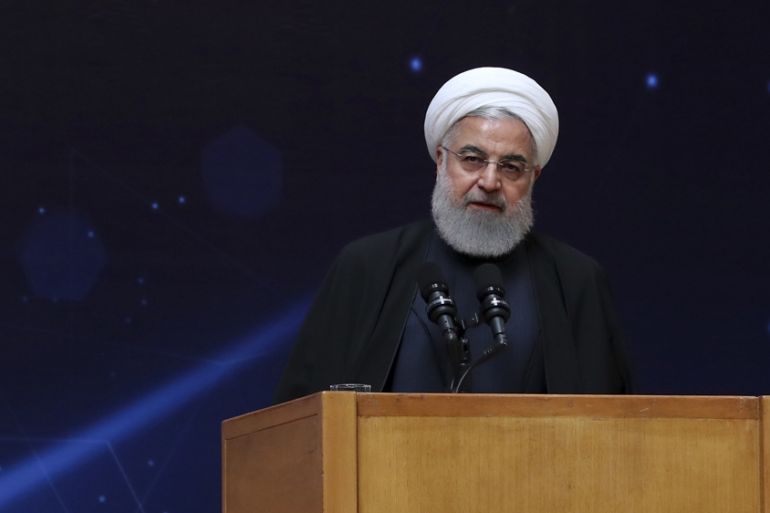The Iran nuclear deal and US opposition
A look at what the historic 2015 nuclear agreement with world powers entailed and why the US pulled out.

Published On 8 May 2019
What is the Iran nuclear deal?
- The nuclear deal, also known as the Joint Comprehensive Plan of Action (JCPOA), is an international agreement that exchanged Iran’s nuclear ambitions for international sanctions relief.
- On July 14, 2015, six countries, China, France, Russia, the UK, the US and Germany, along with the European Union, agreed to lift sanctions imposed on Iran, giving it greater access to the global economy.
- In return, Iran agreed to take steps to curb its ability to make a nuclear bomb. Iran’s enrichment capacity, enrichment level and stockpile were limited for specific durations.
- Before the agreement, Iran had about 20,000 centrifuges; under the agreement, it was not allowed to have more than 6,104 older-model centrifuges at two inspected sites. The centrifuges are used to enrich uranium.
- Iran changed its Arak heavy-water reactor so that it was no longer producing or reprocessing weapons-grade plutonium. Instead, the facility would “host peaceful medical and industrial nuclear research”.
- Iran agreed to halt uranium enrichment at its Fordow site and converted it into an isotopic research centre. It also agreed to allow inspections of key nuclear facilities by the International Atomic Energy Agency (IAEA) to ensure compliance.
- Prior to the agreement, Iran was believed by some experts to be only two or three months away from being capable of making a nuclear bomb. But after the accord, it would have taken a year to make the weapon.
- There was still controversy around parts of the agreement. The restrictions on Iran’s centrifuges would be lifted after the eighth year and, 15 years onwards, restrictions on its uranium enrichment and stockpile size would expire. Some critics believed it would be possible for Iran to go back on the nuclear path around the mid-2020s.
- Iran also negotiated the eventual lifting of an embargo on the import and export of conventional arms and ballistic missiles, which also sparked criticism.
Why did Trump pull out of the Iran deal?
- US President Donald Trump said Iran was violating the spirit of the deal, arguing that Iran was not an ally and that it was working against US interests in the Middle East.
- “The Iranian regime supports terrorism and exports violence, bloodshed and chaos across the Middle East. That is why we must put an end to Iran’s continued aggression and nuclear ambitions. They have not lived up to the spirit of their agreement,” he said in October 2017.
- The US president also doesn’t want the restrictions set out in the deal – such as the one on uranium enrichment and the use of centrifuges – to have end dates.
- Trump did hold out the possibility of negotiating a new agreement with Iran.
- “I have outlined two possible paths forward; either fix the deal’s disastrous flaws, or the United States will withdraw,” Trump said. His proposals included new restrictions on Iran’s ballistic missile programme, more intrusive inspections of its nuclear programme and removing time limits on uranium enrichment and centrifuge restrictions.
Source: Al Jazeera